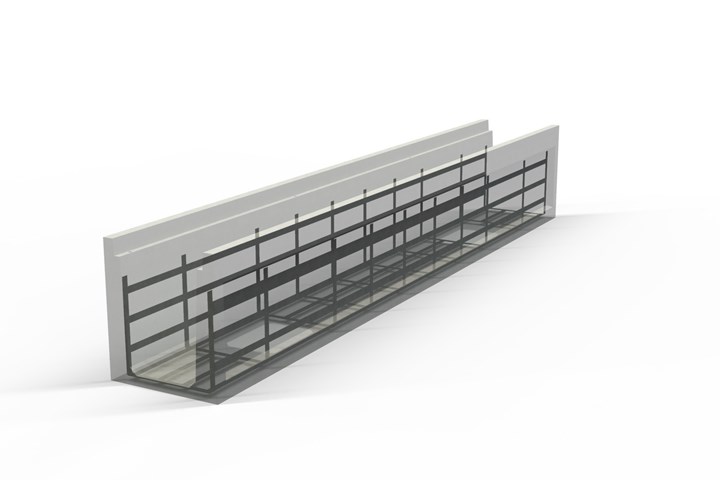WEAV3D composite material approved for infrastructure reinforcement applications
Durable, strong and resistant to corrosion, the thermoplastic-based lattice material is suitable for use in Oldcastle Infrastructure’s polymer concrete and sheet molding compound (SMC) composite products.

Photo Credit: WEAV3D
Oldcastle Infrastructure (Atlanta, Ga., U.S.), a CRH company and provider of infrastructure products, reported on Nov. 5 that it has approved WEAV3D (Atlanta, Ga., U.S.) composite lattice material for reinforcement applications in Oldcastle’s polymer concrete and sheet molding compound (SMC) composite products. Ideal for underground energy, transportation and communication applications, WEAV3D’s composite lattice is said to be a completely non-metallic reinforcement material that provides high levels of durability and strength, as well as resistance to corrosion and other environmental conditions.
Initially developed for a new polymer concrete cable trench designed for 16,000-pound wheel loads, WEAV3D composite lattice was utilized in place of traditional steel wire reinforcement. The lattice is based on a thermoplastic composite material that forms an adhesive bond with polymer concrete and provides exceptional impact and tensile load resistance.
WEAV3D’s lattice reinforcement was able to provide targeted strength around the drain holes and ends of the cable trench, reducing the likelihood of damage during transportation and installation. It also eliminates the corrosion that can occur when products are cut or drilled and steel is exposed. This advanced reinforcement will be available for use in a wide range of Oldcastle’s infrastructure products.
As a leader in composite material products and technology, Oldcastle says it is always looking to use innovative materials to bring lightweight, durable and economical products to the market. “The WEAV3D lattice offers flexibility and performance in the design, handling and placement of reinforcement that cannot be matched with traditional steel reinforcing,” says Oldcastle Product Manager, Chris Schultz, P.E.
“Using thermoplastic composite materials that bond with Oldcastle’s resin yields the best possible strength and mechanical properties,” adds WEAV3D founder and CEO, Christopher Oberste, PhD. “Our composites are also cost-competitive with steel reinforcement.”
Related Content
-
Plant tour: Airbus, Illescas, Spain
Airbus’ Illescas facility, featuring highly automated composites processes for the A350 lower wing cover and one-piece Section 19 fuselage barrels, works toward production ramp-ups and next-generation aircraft.
-
Welding is not bonding
Discussion of the issues in our understanding of thermoplastic composite welded structures and certification of the latest materials and welding technologies for future airframes.
-
PEEK vs. PEKK vs. PAEK and continuous compression molding
Suppliers of thermoplastics and carbon fiber chime in regarding PEEK vs. PEKK, and now PAEK, as well as in-situ consolidation — the supply chain for thermoplastic tape composites continues to evolve.












